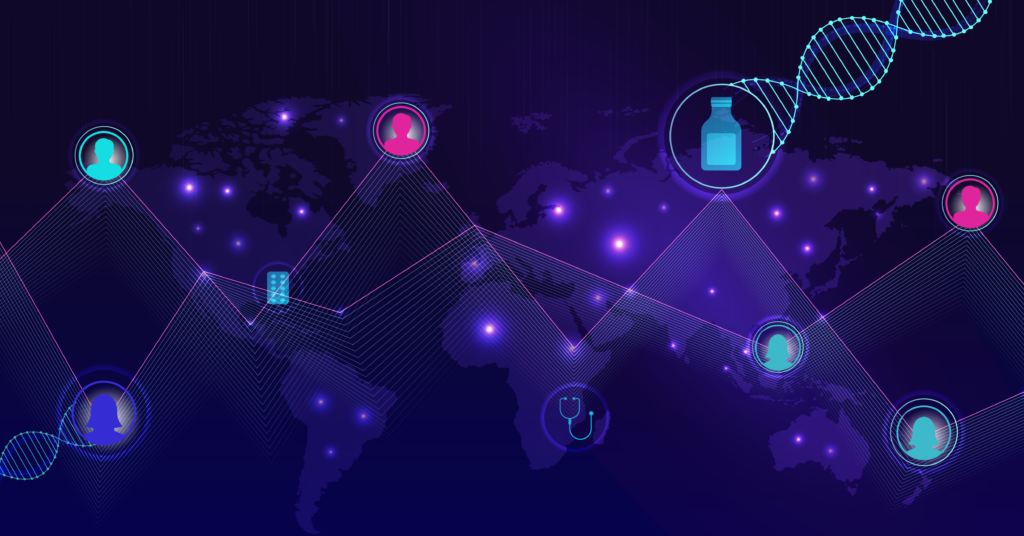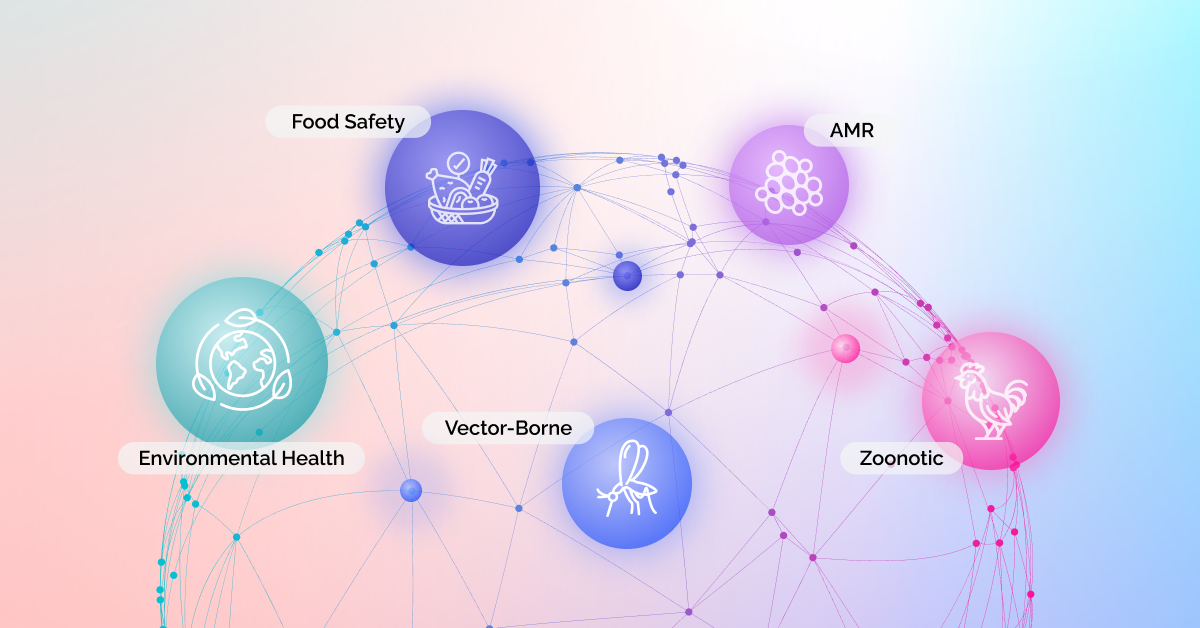Are the drugs we take truly safe?
The modern drug development process relies on a regulated set of steps designed to assess a drug’s safety and efficacy. Sometimes, despite our best efforts, certain adverse events may become apparent only after the widespread use of a specific medication. This is especially true when the drug in question is used across diverse populations with varying characteristics, such as race, gender, ethnicity, or socio-economic status.
Regulatory authorities have come to realize that participant demographics in clinical trials are no less important than the results themselves. There are entire communities worldwide that are underrepresented in clinical research and therefore are at risk of suffering from unanticipated side effects. As we will explore, such unintended oversights can have catastrophic outcomes.
The good news is that real-world data (RWD) can help minimize some of these knowledge gaps. In this blog post, we’ll explore this issue by introducing a drug that was intended to save lives and resulted in fatal outcomes for some. We will then dive into how RWD can enhance pharmacovigilance efforts and help drug developers reach insights that span diverse populations and help create a far more equitable future.
So let’s get started.
Introducing Plavix: Life is Where the Heart is
A cardiac stent will keep you alive after a heart attack, but paradoxically, it can also kill you. While stents keep the artery open and improve blood flow, they are also made out of expendable metal coils and are treated by the body as foreign objects. As a result, stents can also cause a sudden blood clot, block the flow of blood, and in an event termed “re-stenosis”, bring about a fatal heart attack. Doctors need something that will prevent this from happening at all costs.
Clopidogrel bisulfate, sold under the brand name Plavix, is an anti-aggregant drug that keeps blood flowing smoothly. It ensures blood vessels stay open and prevents clots from forming after certain procedures, such as coronary stenting. It is a crucial and life-saving treatment. However – and this is the clincher, it turns out that this is only true for some.
The Hidden Danger of Underrepresentation: A Cautionary Tale
Sometimes drugs that we depend on with full confidence can fail us in catastrophic ways. This was the case with Plavix. As it turns out, the blood thinner that was relied upon to keep patients alive could sometimes lead to surprisingly fatal outcomes when used in certain populations.
It all started in Hawaii. It took several decades to uncover that twice as many Hawaiian patients had an unexpected heart attack after a stent insertion. What was going on there? What was behind this shocking and disturbing figure?
The answer starts with the fact that Plavix is a pro-drug. To work, pro-drugs must be metabolized into the active form of the drug. This doesn’t just happen on its own. The body’s enzymes have the important role of getting the job done. The trouble is that those very enzymes vary genetically.
In the case of Plavix, the genetic variability proved to be lethal. Studies eventually uncovered that Hawaiians, as well as many other Asians, sometimes have a less active form of the particular enzyme needed to activate Plavix, rendering the drug ineffective. Researchers have found, for example, that roughly 14% of Chinese patients cannot metabolize Plavix, as opposed to 2% of caucasian patients. In other words, when given Plavix, they were seven times more likely to undergo a life-threatening complication.
Until this was laid out in the open, doctors were unknowingly prescribing a drug that may have been, for some of their patients, completely useless. Accused of concealing this for years on end, Bristol-Myers and Sanofi were ordered to pay the state of Hawaii over $834 Million in compensation and now face a similar lawsuit by the state of New Mexico.
How can we prevent these kinds of mistakes from happening in the future? Let’s start by hearing what the FDA has to say about it.
A New Era of Medical Inclusion: Strict and for Good Reason
The world is waking up to the urgency of promoting health equity. The fact is that we are all different, and conclusions drawn from one group of people can’t and shouldn’t be applied to everyone. But that’s exactly how drugs are usually developed. In clinical trials, certain subgroups are systematically underrepresented, further deepening social disparities.
To combat this phenomenon, the FDA has updated its guidance on “Enhancing the Diversity of Clinical Trial Populations – Eligibility Criteria, Enrollment Practices, and Trial Designs”. The guiding principle is that when developing a medical product, the participants in the clinical trials should reliably reflect the people most likely to end up using it. This includes taking into account demographic characteristics such as race, sex, age and place of residence, as well as other factors such as comorbidities and concomitant medications.
Okay, so we get that inclusion is encouraged and even mandatory – but how in practicality, do we ensure that clinical trials be truly inclusive? And even more importantly, how can we quickly identify when a trial has missed the mark, such as in the case of Plavix?
RWD: What is it and how can it Help?
RWD offers researchers insights from the outside world that can significantly boost health equity. But first – what is it exactly?
RWD refers to any data captured outside the clinical trial setting. It can be anything – electronic health records, claims data, government registries, health apps and other sources. This incredibly rich pool of information can shed light on the effectiveness and safety of different treatments and interventions, and it offers us the opportunity to really start thinking outside of the box.
Let’s explore three examples in which RWD can make a real impact in equitable drug development.
How RWD Can Promote Health Equity
RWD can help promote health equity in creative and surprising ways. Let’s break this down into post-market surveillance and drug development.
Post-market Surveillance
Perhaps the most glaring take-away from the Plavix incident is the importance of post-market surveillance. Once a treatment or intervention is approved by the FDA, it is important to continue monitoring its safety and effectiveness over time. This is especially true for populations that may not have been sufficiently represented in the original trial.
RWD is powerful because it opens the door to big numbers drawn from the real world. Even if the participants in the original trial had been particularly diverse, it’s doubtful whether the data would have facilitated any statistically meaningful conclusions for any one subgroup. Therefore, it’s imperative to continue to monitor drug use, both passively and actively, after it has been released into the market.
RWD can help identify potential safety issues or concerns, as well as shortcomings in the effectiveness of the treatment in certain populations. For example, had data been collected systematically from the start about the use of Plavix, and coupled with mortality rates, the blind spot in the outcomes data regarding Plavix would have been uncovered much sooner, and many lives could have been saved.
Enhancing Drug Development
RWD can play a crucial role in promoting inclusiveness in clinical trials and raising red flags during drug development.
First, when testing feasibility, RWD could reveal which specific populations should be included in the trials and rigorously tested. If a drug is already prescribed off label for example, researchers could analyze data retrospectively to identify adverse effects and assess outcomes across diverse populations. This could help in the design of clinical trials that ensures crucial sub-groups aren’t left out of the picture.
Second, RWD can facilitate decentralized or even siteless clinical trials. Traditionally, clinical trials are conducted in a few select locations, which can limit participation to certain geographic areas or populations. Using data from EHRs, researchers can identify relevant cohorts of patients with specific characteristics or health conditions to enhance participant diversity.
RWD can then be used to enroll patients and collect their data from afar. This helps include patients from diverse backgrounds and locations, including underserved communities. This way, no matter how remote the clinic, all that’s needed is an internet connection to include segments of society that were previously excluded from trials.
Finally, RWD can also be leveraged to monitor side effects during the trial itself. That is, by collecting data on patients outside the trial, researchers can assess the effectiveness and flag adverse effects in real-time and observe how they may manifest differently in different sub-groups and populations.
Getting Started with RWD
Designing and executing a successful clinical trial is hard work. No matter how rigorously planned and meticulously executed, such studies are bound to have limitations and blind spots. Some of these oversights can be addressed in real-time, but others can only really be unearthed after the fact.
RWD can play a significant role in closing these knowledge gaps. As we have seen, it can help create more inclusive studies and contribute to pharmacovigilance efforts. The real issue, however, is how to access such information in a way that is effective, useful, secure, and clinically valid.
This task can be quite challenging, if not downright impossible, given that data is often dispersed across sources and siloed in incompatible databases – but it’s well worth the effort. Paving a reliable route to high quality RWD and connecting the dots between sources can be a game-changer for drug development.
Fast and reliable access to RWD is not only crucial in accelerating drug development but also in ensuring that drugs are safe and useful for all people, no matter who they are. That’s the vision we’re working towards at Briya, and it’s one we are proud to take part in.







